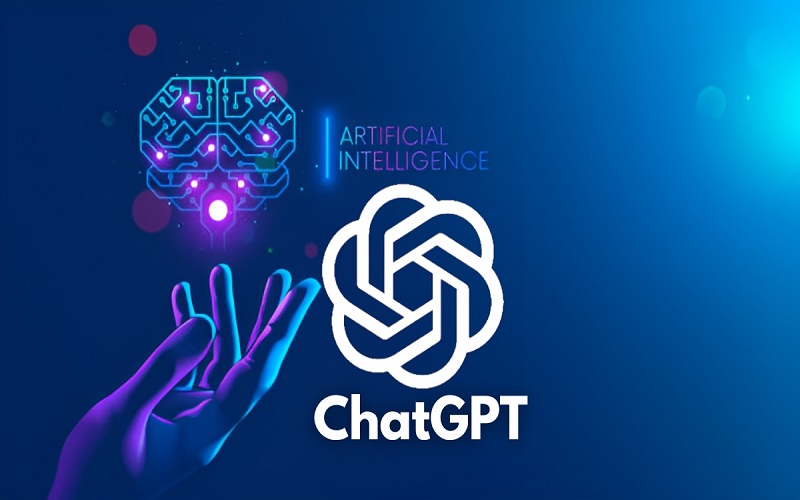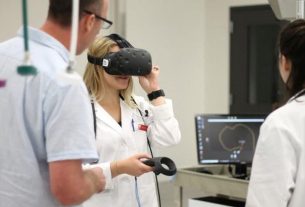ChatGPT is an artificial intelligence language model developed by OpenAI. It is based on the GPT (Generative Pre-trained Transformer) architecture, specifically GPT-3.5, which was released in June 2020. The GPT models are designed to generate human-like text based on the input they receive.
The development of ChatGPT builds upon previous iterations of the GPT series. The first version, GPT-1, was introduced by OpenAI in 2018 and achieved impressive results in various natural language processing tasks. GPT-1 had 117 million parameters, which are the variables that the model uses to learn patterns in the data it is trained on.
GPT-2, the successor to GPT-1, was released in February 2019. It was a significant improvement over its predecessor, with 1.5 billion parameters, enabling it to generate more coherent and contextually relevant responses. GPT-2 gained a lot of attention due to its ability to generate highly realistic and coherent text, leading to concerns about its potential misuse.
OpenAI released GPT-3 in June 2020, representing a major leap in both size and performance. GPT-3 had a staggering 175 billion parameters, making it the largest language model at the time of its release. Its size allowed it to generate text that was even more fluent and contextually accurate. GPT-3 demonstrated remarkable capabilities across various applications, including language translation, question-answering, and text completion.
Building on the success of GPT-3, OpenAI introduced GPT-3.5 in 2021, which is the architecture powering ChatGPT. Although the specific details of the improvements in GPT-3.5 over GPT-3 are not publicly disclosed, it can be assumed that it includes refinements and enhancements to the model’s architecture and training methodology.
ChatGPT was made accessible through an API (Application Programming Interface) that allows developers to integrate it into their own applications, products, or services. It enables users to have interactive conversations with the language model, simulating a human-like conversational experience. The API provides a simple way to leverage the capabilities of ChatGPT and use it for a wide range of tasks, from chatbots to virtual assistants and more.
OpenAI continues to refine and advance the GPT series to push the boundaries of natural language understanding and generation. By training on vast amounts of text data, GPT models are able to learn linguistic patterns and produce coherent and contextually relevant responses, making them valuable tools for various applications in natural language processing and artificial intelligence.
The Future of ChatGPT
As an AI language model, I can provide insights into potential futures based on current trends and possibilities. However, it’s important to note that the future is inherently uncertain, and these predictions should be taken with caution. Here are a few areas where we might see developments in the future:
Artificial Intelligence Advancements:
AI technology is likely to continue advancing at a rapid pace. We can expect improvements in areas such as natural language understanding, machine vision, and decision-making capabilities. AI models, like GPT, might become even more sophisticated, enabling them to perform complex tasks and understand context even better.
Automation and Job Market:
Automation is likely to continue transforming industries and the job market. Repetitive and routine tasks could be automated, leading to changes in employment patterns. New jobs might emerge that require human creativity, critical thinking, and adaptability. There will be a need for upskilling and retraining to meet the demands of a changing job market.
Ethical Considerations:
As AI becomes more prevalent, ethical considerations will become increasingly important. Issues such as data privacy, algorithmic bias, and AI governance will need to be addressed. Regulations and guidelines might be put in place to ensure the responsible and fair use of AI technology.
Healthcare and Biotechnology:
Advancements in healthcare and biotechnology are expected to continue, leading to improved treatments, personalized medicine, and potentially even breakthroughs in areas like gene editing and regenerative medicine. AI can play a significant role in analyzing vast amounts of medical data, aiding in diagnostics, and accelerating research.
Climate Change and Sustainability:
The urgency of addressing climate change and achieving sustainability will likely drive innovations and efforts in renewable energy, sustainable agriculture, and environmental conservation. AI and data-driven approaches can contribute to monitoring, analyzing, and mitigating the impacts of climate change.
Human-Machine Collaboration:
As AI technologies advance, we may see increased collaboration between humans and machines. This could involve using AI as an assistant to enhance human productivity, decision-making, and creativity. Human-AI partnerships may become more integrated into various aspects of our lives.
Virtual and Augmented Reality:
Virtual reality (VR) and augmented reality (AR) technologies have the potential to revolutionize various industries, including entertainment, education, training, and communication. Continued advancements in these areas could lead to more immersive and interactive experiences.
These are just a few possibilities for the future, and there are undoubtedly many other areas that will undergo significant transformations. The pace of technological change is rapid, and the future will be shaped by various factors, including scientific discoveries, societal trends, and global challenges.
The Uses of ChatGPT
AI language models like ChatGPT have a wide range of potential uses across various industries and applications. Here are some examples:
Customer Support:
ChatGPT can be used to develop intelligent chatbots that provide customer support and answer frequently asked questions. It can handle customer inquiries, provide product information, and assist with troubleshooting common issues.
Content Generation:
ChatGPT can assist content creators by generating ideas, helping with research, and providing suggestions for various types of content, including articles, blog posts, social media captions, and more. It can also aid in generating dialogue or narrative for storytelling purposes.
Virtual Assistants:
ChatGPT can power virtual assistants to provide personalized assistance to users. It can schedule appointments, set reminders, answer queries, provide recommendations, and perform tasks such as booking flights or making reservations.
Language Translation:
ChatGPT can be utilized for language translation tasks. It can help translate text or provide real-time interpretation services, making it easier for people to communicate across language barriers.
Education and e-Learning:
ChatGPT can support e-learning platforms by providing interactive and personalized learning experiences. It can answer student questions, provide explanations, offer study tips, and assist in solving problems across various subjects.
Creative Writing and Storytelling:
ChatGPT can aid writers, screenwriters, and game developers in generating ideas, creating characters, and developing engaging narratives. It can serve as a tool for brainstorming, overcoming writer’s block, or even collaborating with human authors.
Research and Information Retrieval:
ChatGPT can assist researchers by providing relevant information, summarizing articles or research papers, and helping in data analysis tasks. It can quickly scan and extract key points from a large volume of text, saving time and effort.
Personal Productivity:
ChatGPT can act as a personal assistant to help users manage their tasks, organize schedules, set goals, and provide reminders. It can offer productivity tips, suggest time management strategies, and help users stay focused and motivated.
Gaming and Interactive Entertainment:
ChatGPT can be incorporated into video games or interactive entertainment experiences to create dynamic and engaging characters. It can provide realistic and contextually relevant responses to player inputs, enhancing the overall gaming experience.
Mental Health Support:
ChatGPT can be employed to provide mental health support and resources. It can engage in conversations, offer empathetic responses, and provide information on coping strategies or self-care practices. However, it is important to note that AI models should not replace professional medical or mental health services.
These are just a few examples of the potential uses of ChatGPT. As the technology continues to evolve, we can expect to see new and innovative applications emerge in various domains.

Email: ben@satprwire.com Phone: +44 20 4732 1985
Ben has been listening to the technology news for quite some time that he needs just a single read to get an idea surrounding the topic. Ben is our go-to choice for in-depth reviews as well as the normal articles we cover on a normal basis.



